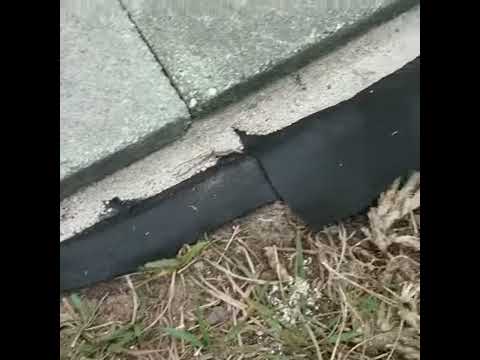Introduction
When it pertains to leading setup, specifically in a distinct climate like that of the Bay Area, seasonal considerations play a vital role. Not only do these variables influence the quality and durability of your interlocking paver setup, however they also impact organizing and project expenses. With its Mediterranean pavers san francisco environment, identified by wet winter seasons and dry summers, recognizing just how seasonal modifications influence paving jobs is essential for both house owners and paver installers alike.
This write-up will delve into different elements of paving setup worrying the Bay Area's periods, guaranteeing you have all the details needed to make informed decisions concerning your outside rooms. From selecting the right materials to picking the very best time for installation, we'll cover every little thing you need to understand about paving in this unique climate.
Seasonal Considerations for Paving Setup in the Bay Location Climate
Understanding the Bay Area Climate
The initial step in browsing seasonal factors to consider for paving installment is understanding what makes the Bay Area's environment unique. This region commonly experiences light, damp winter seasons and cozy, completely dry summer seasons. The temperature rarely goes down listed below cold yet can reach right into the high 80s during summer months.

Winter Weather condition Implications
During cold weather (December to February), the region obtains most of its PAVER CONTRACTOR annual rains. Rainfall can result in ground saturation, which might make complex paving tasks if not properly accounted for.
Effects on Ground Conditions
Wet ground problems can lead to unequal settling or changing of pavers if installed poorly. It's vital for paver installers to analyze soil moisture levels before beginning work.
Summer Dryness and Warmth Effects
In comparison, summertimes (June to August) are usually dry with lots of sunshine. While these conditions are favorable for leading installation from a drying point of view, extreme warm can cause products like asphalt or concrete to set also quickly.


Choosing Interlocking Pavers: A Seasonal Perspective
When choose interlacing pavers for your installation project, consider their compatibility with local weather patterns throughout different seasons.
Material Selection Based on Seasonality
Certain materials do much better under details climatic problems:
- Concrete Pavers: Suitable throughout warmer months when temperatures are stable. Clay Pavers: Permeable nature allows them to soak up some wetness; nonetheless, they may crack throughout severe heat if not appropriately sealed.
Best Seasons for Paving Installation
Knowing the best times of year for your job can conserve cash and time while making sure quality work.
Spring: A Shift Period
Spring (March to May) often brings milder temperature levels and much less rains compared to winter. This period is typically considered suitable for paving setups.
Benefits of Spring Installations
- Moderate temperatures lower anxiety on materials. Ground problems are typically steady after winter months rains.
Fall: One more Favorable Timeframe
Fall (September to November) mirrors spring's advantages with cooler climate and reduced rainfall risks.
Why Autumn Installments Are Great
- It avoids summer warmth that may warp or damages materials. Less competition among house owners suggests quicker scheduling with paver installers.
Challenges Unique to Winter months Installations
While it's possible to install pavers throughout winter months, there are inherent difficulties that featured it, calling for cautious planning and execution.
Risk of Rainfall Delays
Rainy days can considerably delay tasks-- paver installers might require extra time because of unsuitable working conditions triggered by saturated ground.
Temperature Impacts on Materials
Cold temperatures can hinder proper curing prices of concrete or asphalt blends. Protective procedures should be taken when installing throughout cooler months.
Factors Influencing Paving Setup Costs
Understanding exactly how different seasons influence costs can assist budgeting successfully for your job.
Labor Availability Trends Throughout the Year
Paver installers may charge more during peak periods (spring and fall) because of greater demand. In contrast, offseason installations might yield discounts as contractors look for job during slower periods.
Long-Term Considerations in Leading Maintenance
Once your interlocking pavers are mounted, preserving them according to seasonal variations is key.
Sealing Techniques with Various Seasons
Applying sealants at ideal times makes sure defense against rainfall or UV damage:
- Spring: Ideal for securing after wintertime wear. Late Summertime: Best time before fall rains begin.
Environmental Factors Impacting Paving Choices
The Bay Location's environment influences not just looks however useful efficiency also when it comes to paved surfaces.
Soil Composition Awareness
Clay-heavy soils maintain moisture longer than sandy soils which drain pipes quicker-- this impacts water drainage options required throughout installation.
Common Inquiries About Seasonal Factors To Consider in Paving Installation
What's the most effective season for interlocking paver installation?- Spring and fall are suitable as a result of moderate temperature levels and decreased rainfall risks.
- Yes, however beware about dampness degrees and freezing temperatures influencing material setting.
- Excessive rainfall can rinse sand utilized between pavers or affect their positioning otherwise properly covered.
- Ensure that you moisturize any clay products beforehand given that severe warmth can lead them toward fracturing without prior hydration.
- Yes! Upkeep routines must align with seasonal modifications; sealing must occur post-winter wear yet pre-autumn rains.
- Lighter-colored pavers reflect sunshine better than darker ones which take in warmth-- consider this when choosing colors!
Conclusion
Navigating with seasonal considerations is crucial when intending a paving installation project in the Bay Area environment. By comprehending exactly how climate influences everything from product selection to labor schedule-- and thinking about long-term maintenance-- you'll be well-appointed to make informed options that boost both function and visual appeals in your outside spaces.
Whether you're taking on a DIY project or hiring a specialist paver installer, keep in mind that timing is every little thing! Planning around those crucial seasonal modifications will ensure your interlocking pavers stand solid against whatever Mother Nature throws at them while making best use of both appeal and durability over time!